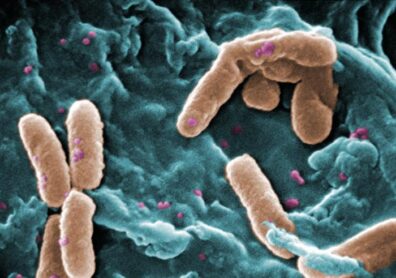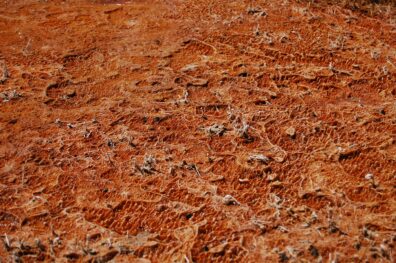Dear Prince,
Germs are tiny organisms—also called microbes. They’re so small you have to zoom in with a microscope to see them. They can be bacteria, viruses, fungi or other teeny things. Some microbes make us sick. Some don’t bother us at all. Some help us out.
I talked about all that with my friend Eric Lofgren. He studies infectious disease at Washington State University.
He said there are two main reasons we have germs on our skin. We pick up some microbes from the environment. Some live on our skin all the time.
“The world is full of microbes,” Lofgren said. “They’re very successful organisms, so they’re everywhere.”
The germs we pick up come from nature or other people. We use our hands a lot, so that’s the most likely place for those microbes to encounter our skin.
We run into microbes when we dig in a garden, pick up rocks or splash in a river. There are even microbes floating around in the air. Some of them stick to our skin when we bump into them.

These hotdog-shaped bacteria are called Pseudomonas. They hang out in soil and water. Sometimes people pick these germs up in hospitals where they can infect lots of body parts, including the skin. Pseudomonas can make people sick, but some people have it on their skin all the time. You can also see smaller purple bacteria nearby. CDC/Janice Haney Carr
Sometimes we pick up germs from a sick person. Maybe they sneeze or cough. Microbes fly out with their snot or spit. They land on stuff or an unlucky person in the splash zone. Germs can also come off when the sick person touches something like a door knob. The next person that touches it might pick up those microbes.
We also encounter germs that normally live inside us, like in our guts. Those microbes help us digest food and stay healthy. Since they’re in our guts, they come out with poop. They can make us sick if they move to a new place—like our mouths or eyeballs.
Luckily, soap and the motion of scrubbing our hands sends most of those microbes down the drain.
But some microbes live on our skin full time, including our hands. Those microbes need the same things we do: space, shelter, water and food.
“If you were living on a giant, where would you want to live?” asked Lofgren. “Their forearms or their belly button? The belly button is a nice, sheltered cave with nutrients and moisture.”
The microbes that normally live on our skin tuck themselves into creases and crevices, like the gaps between our skin cells. They chow down on tasty stuff on our skin like oils and sugars.
By taking up space and using resources, these microbes don’t leave as much room for germs we pick up that don’t belong on our skin. That helps us out.

Has a dental hygienist ever scratched your teeth with a tool? They’re scraping off dental plaque. That’s a biofilm! This photo shows a mat-like biofilm that lives on some hot springs in the Pacific Northwest. It’s so thick that it’s easy to see—even though it’s made of teeny, tiny microbes. Amateria1121CC BY-SA 3.0
But living on our skin isn’t all throw pillows and comfy couches. Lofgren told me it’s a harsh environment for our microbes. They get jostled off and flushed down the sink. Our hands constantly encounter germs that compete with them.
So, some microbes form a sticky, slimy community called a biofilm. It’s a gluey matrix they ooze out to keep the group stuck together. That makes it harder to wash away those microbes.
I guess some germs are single (celled) and ready to mingle.
Sincerely,
Dr. Universe